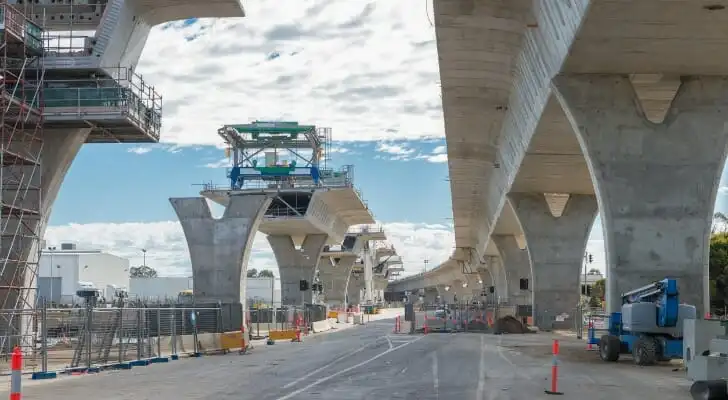
The U.S. infrastructure investment landscape is shifting dramatically. With $110 billion in federal funding flowing through programs like the Bipartisan Infrastructure Law, contractors and construction firms have unprecedented opportunities to compete for large-scale, stable projects. Understanding where this money is going and how to position your company is critical for 2025 success.
The Federal Highway Administration estimates $39 billion in federal road and bridge funding for 2025. This represents the single largest opportunity for construction contractors. States are scrambling to submit projects and begin work before appropriations reset.
Key advantages for contractors: Federal projects have extended timelines, detailed plans, and reliable payment. However, they require prevailing wage compliance, bonding, and documentation. Contractors with experience in federal bidding and DBE (Disadvantaged Business Enterprise) certifications win more bids.
The EPA mandate to replace all lead service lines by 2037 creates a massive, long-term market. $18 billion in federal water funding for 2025 is accelerating these replacements, plus water treatment facility upgrades.
Rural and underserved communities are prioritized for federal water funding. Many rural water systems have aging infrastructure requiring urgent replacement. Rural contractors have significant competitive advantage in accessing these projects.
Federal funding also supports wastewater infrastructure and stormwater management to address water quality and flooding issues. Treatment plant upgrades and expansions create steady, high-value project opportunities.
$15 billion for EV charging infrastructure in 2025 represents one of the fastest-growing federal funding categories. The National Electric Vehicle Infrastructure (NEVI) program is funding charging stations across the country, with 40,000+ stations planned by 2030.
Contractors with experience in electrical installation and site development can enter this market quickly.
$10 billion for transit systems focuses on expanding and modernizing public transportation. Major cities are funding commuter rail expansion, bus rapid transit (BRT) systems, and pedestrian/bicycle connectivity.
Transit projects typically involve:
Contractors experienced with urban infrastructure and traffic management have significant advantage.
$12 billion for climate resilience funds projects addressing flooding, coastal erosion, and extreme weather impacts. States affected by recent hurricanes, floods, and wildfires are prioritizing these projects.
Federal projects require prevailing wage compliance. Ensure your labor cost estimates account for Davis-Bacon wage rates, which are significantly higher than market rates in many regions.
Establish relationships with state DOTs, transit agencies, and water authorities managing federal funds. Many maintain contractor qualification lists and invite qualified contractors to bid on projects.
Federal projects demand detailed documentation, safety protocols, and reporting. Contractors with strong compliance systems and project management experience win higher-value contracts.
Federal infrastructure funding represents stable, predictable opportunity for contractors willing to navigate the compliance and bidding requirements. With $110 billion flowing in 2025 alone, and multi-year appropriations continuing through 2026 and beyond, infrastructure construction is entering a boom phase.
Contractors who position themselves now—obtaining certifications, building relationships with agencies, and developing federal project expertise—will capture disproportionate share of this multi-billion-dollar market. The question isn't whether to pursue federal work; it's how quickly you can become qualified.
Developer Norm Swanson proposes an 88-unit studio apartment building on Syracuse's University Hill near Syracuse University campus, with related historic home renovation for tenant events.
KeyBank planning a new 3,500-square-foot freestanding branch with drive-thru services at 1765 East Ridge Road in Irondequoit, NY, seeking approval in February 2026.
Transportation Secretary Sean Duffy announced $1.5 billion in FY 2026 BUILD Grant funding for infrastructure projects, with applications due February 24, 2026.